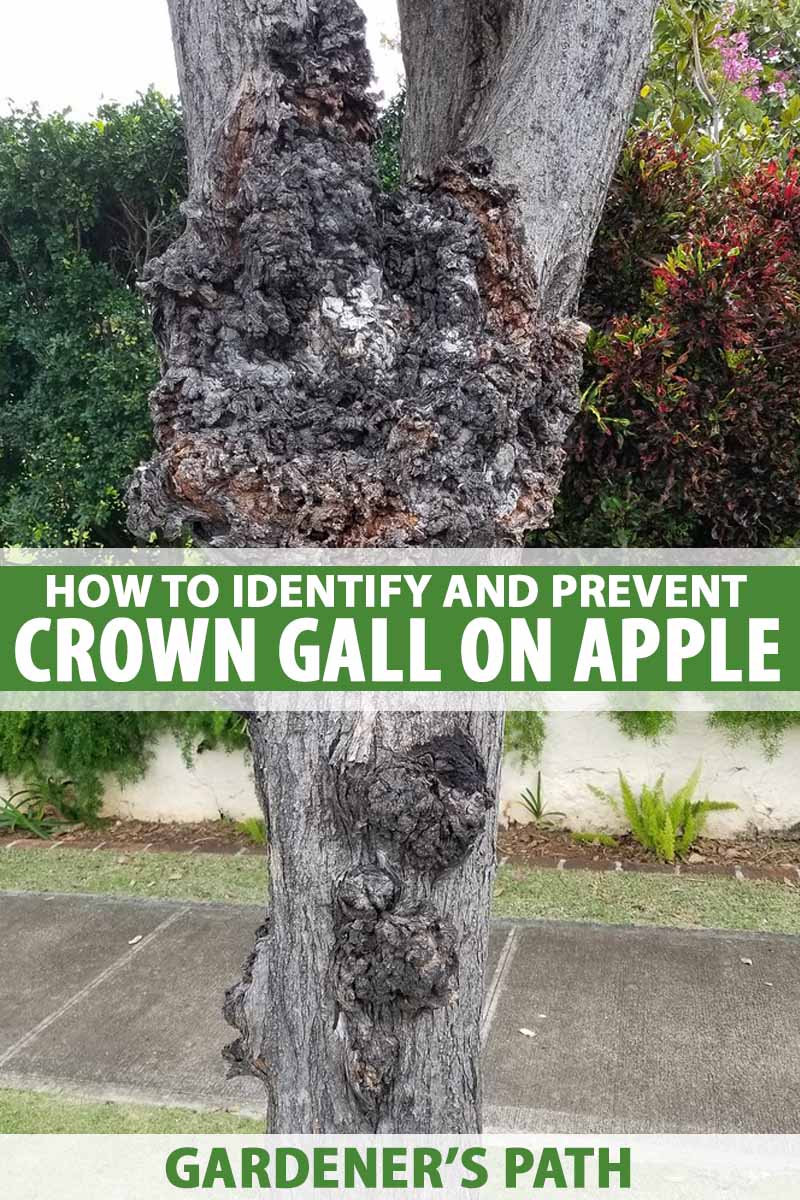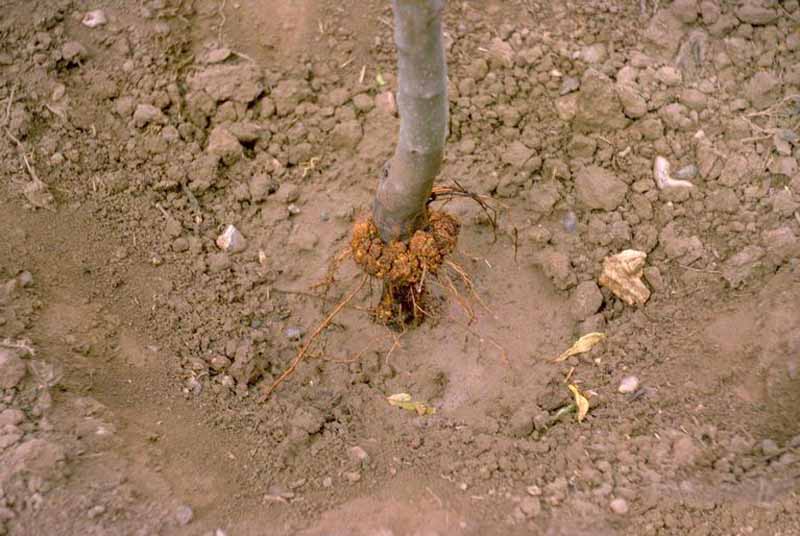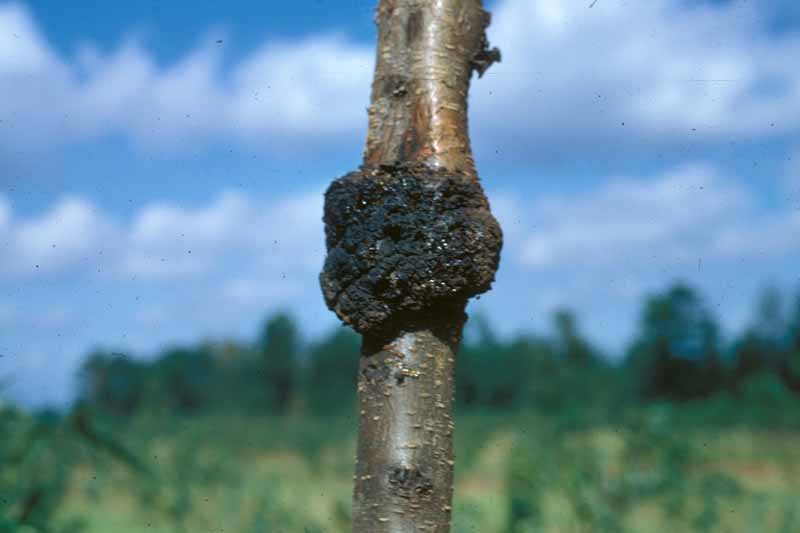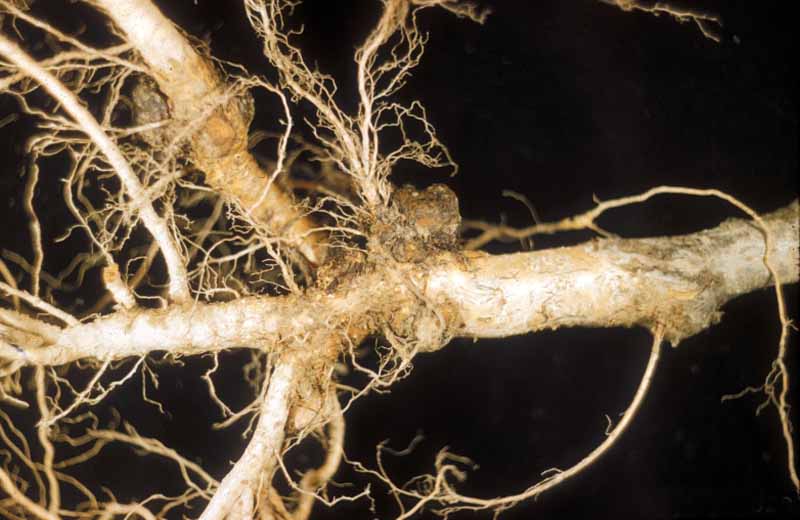This disease, caused by the bacteria Rhizobium rhizogenes (old name Agrobacterium tumefaciens), is likely to be fatal to your tree over time. Since crown gall can infect hundreds of kinds of plants, a number of fruit trees can contract this infection. They include apple, crabapple, peach, nectarine, plum, apricot, cherry, and pear. We link to vendors to help you find relevant products. If you buy from one of our links, we may earn a commission.
How to Tell if Your Tree Has Crown Gall
If your tree looks like it has warts, it is probably crown gall. The galls start out light in color but turn dark over time. The growths vary in size – typically pea-sized to several inches – but they can grow to as much as a foot in diameter. Most of them will be at or just below the soil line, but some could be on the upper stems. Since the galls are caused by the production of hormones, which can travel through the plant, these growths can be some distance from the actual infection. Sometimes people get crown gall confused with growths caused by woolly apple aphids or with burrs (aka burl). The woolly apple aphid galls appear in a greater number in an infected tree and they are smaller. And more importantly, the aphid variety produces a white cottony wax.
Effects of an Infection
Crown gall interferes with the flow of nutrients and water up the stem. This can affect normal growth, and your tree might start to decline. It will be more sensitive to drought stress or winter injury. Worst-case scenario – the growths can girdle the stems or trunk and kill the tree outright.
How Plants Get Infected and What To Do About It
The bacteria are very common in soils, since they infect so many plants. And they can enter through wounds! So many types of wounds – pruning wounds, those introduced by mowing or cultivating, freeze damage, wind damage, or insect injuries. There are some treatment options that may or may not work. You can paint the growths on the stems with paint that contains antibiotics. Don’t paint more than half of the area around the stem. Another option is Gallex. You can treat small growths with this compound, and it may help to reduce them.
What To Do If Your Tree is Badly Infected
If your tree is severely declining, you should remove it and burn the stump and as many of the roots as you can. You will have to wait about three years before you can plant another fruit tree there. One thing that will help to cleanse the soil is to grow grasses on the land during this period.
How to Prevent Crown Gall
Your best bet is to avoid the disease in the first place. Unfortunately, this can be difficult. These bacteria are very common in nursery soils, so buy certified disease-free rootstock and be careful not to damage the roots or crowns when you plant your tree! Also be careful not to injure your tree while mowing or cultivating. Control insects and root-knot nematodes that feed on the roots, so they won’t cause injuries that the bacteria could use to colonize the plants. Keep your plants actively growing with the proper amount of water and fertilizer. Some people swear by dipping the roots in strains of Rhizobium radiobacter that cannot cause disease with the idea that it will outcompete the bacteria that cause crown gall. However, this treatment is not effective against every type of crown gall and often doesn’t work in soils that have a heavy infestation of the bacteria.
A Common Worldwide Problem
Soils throughout the world are infested with the bacteria that cause crown gall. This is bad news for fruit tree growers, since these bacteria have a very wide host range. Your apple, crabapple, peach, pear, apricot, nectarine, and plum trees are all susceptible. Do your best to prevent wounds that the bacteria can colonize and be prepared to remove a tree if it develops a severe infection. Have you encountered crown gall? Let us know how you fared in the comments below!
Bot Rot Powdery Mildew Cedar Apple Rust
© Ask the Experts, LLC. ALL RIGHTS RESERVED. See our TOS for more details.




